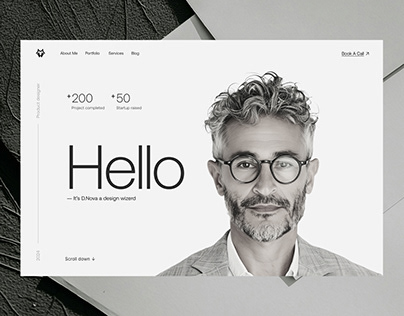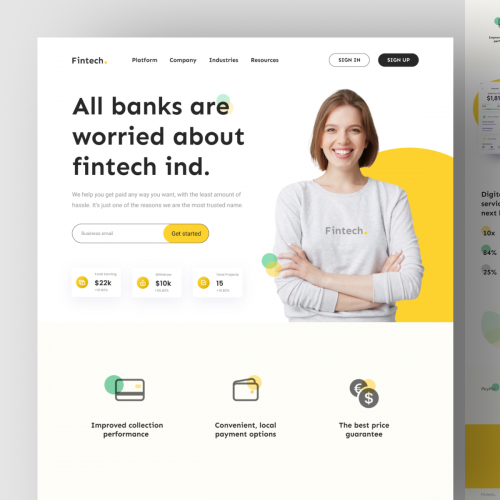Top Tips for Creating an Impactful Site Layout That Transforms
To attain this, one must think about a variety of elements, consisting of recognizing the target audience, focusing on customer experience, and maximizing for mobile platforms. The tactical use of compelling call-to-actions and a distinct aesthetic hierarchy plays a critical duty in guiding customers through their journey.

Understand Your Target Market
Comprehending your target audience is fundamental to effective internet site layout, as it prepares for producing an appealing individual experience. Recognizing who your users are, including their demographics, preferences, and habits, enables developers to customize the site's web content, design, and functionality to fulfill certain requirements.
Performing comprehensive marketing research is vital in this procedure. Surveys, meetings, and analytics can offer beneficial insights into individual assumptions and pain factors. By compiling this information, designers can produce individual personalities that represent different sectors of the target market, guaranteeing that layout choices are notified and relevant.
Furthermore, comprehending the target audience helps in selecting suitable style elements such as color design, typography, and imagery that resonate with users. A website that talks directly to its target market promotes a sense of link and depend on, motivating longer gos to and higher conversion prices.
Ultimately, a user-centered strategy to website style not only boosts user complete satisfaction but additionally supports business purposes by driving engagement and loyalty. By prioritizing the demands and preferences of the target market, a site can properly offer its function and achieve preferred outcomes.
Prioritize User Experience
To improve the general efficiency of a web site, prioritizing customer experience (UX) is necessary (Website Design). A properly designed UX makes sure that site visitors can navigate the website easily, discover info quickly, and engage with content meaningfully. This brings about boosted individual complete satisfaction and greater conversion rates
Begin by carrying out instinctive navigating. Menus ought to be practically structured, allowing customers to locate essential locations of the website with minimal initiative. Consistency in design components, such as color design and fonts, promotes experience, which is important for keeping customer involvement.
In addition, consider the filling rate of your website. A delay of simply a few seconds can bring about considerable drop-offs, as customers are much less most likely to await a slow-loading page. Improving pictures and enhancing code can improve efficiency and preserve visitors.
By focusing on user experience, you not just develop a much more pleasurable environment for site visitors however also enhance your brand name's integrity. Eventually, a focus on UX is a financial investment in the long-lasting success of your site.
Maximize for Mobile Gadgets
Enhancing for smart phones is critical in today's electronic landscape, where a raising variety of users access internet sites via mobile phones and tablets. A mobile-friendly design not just boosts individual experience yet additionally plays a substantial role in improving search engine rankings. To achieve this, it is necessary to adopt a receptive design that instantly adapts to various display sizes and positionings.

Filling rate is an additional important aspect; mobile individuals are normally much less client and expect rapid click this site accessibility to info. Optimize photos and take advantage of browser caching to improve efficiency. Finally, test your website on multiple gadgets and display resolutions to recognize and fix any type of potential functionality issues. By prioritizing mobile optimization, you ensure that your web site why not look here stays competitive and properly engages a wider target market.
Use Engaging Call-to-Actions
A website's performance commonly rests on its capacity to lead site visitors toward desired actions, making compelling call-to-actions (CTAs) important elements of design. CTAs function as the critical factors that guide customers to engage with the website, whether that implies purchasing, enrolling in a newsletter, or downloading and install a resource.
To produce efficient CTAs, quality is vital. Usage succinct language that clearly interacts the action you want the customer to take. Phrases such as "Get Begun," "Join Free," or "Shop Now" not just share urgency but also eliminate ambiguity. The placement of CTAs is just as essential; they must be strategically positioned throughout the web page to ensure they are conveniently noticeable, especially in high-traffic areas.
Additionally, think about making use of directional cues, such as arrows or pictures, to guide individuals toward these buttons. By focusing on these components, services can substantially improve user engagement, driving conversions and inevitably attaining their internet site's goals.
Concentrate On Visual Hierarchy
Reliable site style counts greatly on a well-structured aesthetic power structure that overviews individuals via material seamlessly. By arranging elements in a fashion that focuses on details, designers can boost individual experience and promote decision-making. This includes using size, color, comparison, and spacing tactically to accentuate one of the most critical elements of a web page.
Making use of larger font styles for headings and subheadings develops a clear distinction between various areas, allowing users to scan material easily. Additionally, employing contrasting shades for buttons and calls-to-action can catch customer interest and encourage communication. Whitespace is another vital element; it stops mess and makes it continue reading this possible for customers to concentrate on vital messages without disturbances.
Photos and graphics need to complement the text while also sticking to the established hierarchy, reinforcing the total message (Website Design). Consistency in layout aspects, such as color pattern and typography, more reinforces the aesthetic pecking order, making navigation intuitive
Final Thought
In verdict, efficient website style necessitates a comprehensive understanding of the target audience, prioritization of customer experience, and mobile optimization. The strategic use engaging call-to-actions and a distinct aesthetic hierarchy further enhances user involvement. By applying these principles, web sites can accomplish higher conversion rates, ensuring that layout components not only attract visitors however additionally facilitate smooth navigation and interaction. Inevitably, a well-executed web site design functions as a crucial element in driving user activities and achieving company goals.